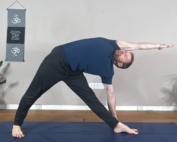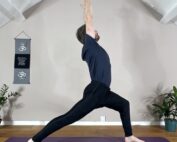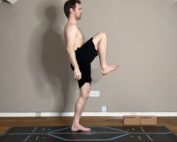
Enhance Your Performance: Integrating Mobility and Flexibility into Your Routine
Welcome to the world of Mobility and Flexibility. I’m Dav Jones, here to guide you as you learn about these important topics. Today, we’re going to find out what Mobility vs Flexibility means and the Difference between Mobility and flexibility. Whether you’re just starting or you’ve been active for a while, you’re in the right place. Let’s begin this adventure together and see how you can improve your health and movement!
What is Mobility? Active Range of Motion (AROM)
Mobility is all about being able to move your body freely and easily. It’s the ability to move the limbs and skeletal structure of the body through their respective joint ranges without any external assistance or props. In movement mobility terms, you can call this active range of motion (AROM). Think of it as the ultimate freedom for your body to do what it naturally does—reaching high, bending down, or twisting around—without any trouble. But mobility isn’t just movement; it’s about how well your muscles and joints work together to let you move in an agile, free, and comfortable way.
Dynamic Examples of Mobility in Action:
- Moving the shoulder joint through its respective motions.
- Contemporary dance.
- The ability to move in many different directions at choice and will.

What is Flexibility – Passive Range of Motion (PROM)
Flexibility is a term used to describe the range of motion the limbs and joints of the body can access through the use of external force/load. For example, in a seated position with legs outstretched in a forward fold – the external influence here is the weight of the upper body and the force of gravity lowering the body towards the legs. The external influences of these loads/forces will share insights into the flexibility of this person and the connective tissue being stretched in this posture (seated forward fold). This is known as the passive range of motion (PROM). Other examples of where an individual could express the ranges of their flexibility could be through the use of props and or the assistance of another person. Having a suitable amount of flexibility is useful for the demands of daily lifestyle tasks.
Dynamic Examples of Flexibility in Action:
- Yoga Poses: Holding a deep forward bend, stretching the hamstrings and back.
- Side Splits – abducting to the legs, bringing your pelvis to the floor.
- Full Wheel Pose (Urdhva Dhanurasana) – This deep backbend is a great full-body expression of a person’s joint flexibility.

Difference between Mobility (AROM) vs Flexibility (PROM)
The difference between mobility and flexibility lies between a person’s active ROM and their passive ROM. Typically an individual’s passive ROM will express a greater joint range than that of an individual’s active ROM.

Hip Flexion – Active Range of motion

Hip Flexion – Passive Range of motion
Uses for Developing Mobility:
- Joint Health: Enhances the function of joints, allowing them to move through their full range without discomfort.
- Muscle Activation: Involves the contraction/lengthening and coordination of muscles to perform joint/limb movements without the use of an external influence.
- Dynamic Nature: Essential for performing daily activities, movements/sports with efficiency and ease.
- Strength Dependency: Requires muscle strength to support and move joints effectively through the joint(s) ranges of motion.
- Functional Movement: Improves overall body mechanics and movement patterns.
- Prevention of Injuries: Reduces the risk of injuries by improving the functionality of muscles and joints.
Uses for Developing Flexibility:
- Muscle Length: Focuses on improving viscoelasticity – the connective tissue’s ability to contract and lengthen through stresses – inclusive of muscle, fascia, tendons, and ligamentous tissue resilience.
- Passive Stretching: Achieved through static stretches without active muscle engagement by using gravity to assist in the stretch or the use of a prop or an assistant.
- Range of Stretch: Measures how far a muscle group can stretch beyond its normal length.
- Reduced Muscle Tension: Helps in relaxing muscles and reducing stiffness.
- Improved Muscle Efficacy: Stretching modalities aid with the concentric (shortening) and eccentric (lengthening) of muscle tissue which are the two primary functions of muscle tissue. For a muscle to work efficiently, it is required to be able to shorten and lengthen effectively.
- Enhanced Recovery: Helps in the recovery process post-exercise by alleviating muscle tightness.
Benefits of Mobility and Flexibility
Ten benefits of improving both mobility and flexibility:
- Enhanced Movement Efficiency: Better mobility and flexibility allows for smoother, more efficient movements during physical activity.
- Decreased Risk of Injury: Increased flexibility and mobility help prevent injuries by enabling the muscles and joints to move into greater expressive ranges of motion with ease and control. With these greater joint ranges, and the use of an effective training method, the body’s nervous system becomes more familiar with these new ranges and becomes more efficient and receptive in sending and receiving signals from the brain to the body and vice versa.
- Improved Posture: Regular mobility exercises can reduce joint compensation, and improve the efficacy of breathing mechanics, which in turn helps to bring joints into centration (the spine’s natural position). This has a knock-on effect on the body’s ability to interact with gravity.
- Increased Strength at joint end-range: Effective mobility training involves strengthening the muscles around the joints, and training the joint systems in their ‘end-range’ functional position. This, in-turn teaches the body’s nervous system how to send the necessary signal stimulus to stabilise the joint and muscle tissue being trained.
- Increased Muscle Strength: Flexibility and mobility training increase the resilience of the body’s connective tissue through a concept known as ‘progressive overload.’ Progressive overload progresses and adapts the body’s connective tissue over a gradual period of time through applied stress/resistance under a controlled program/routine.
- Enhanced Athletic Performance: Athletes can perform better with greater flexibility and mobility, affecting everything from movement patterns, and running speed to agility.
- Reduced Muscle Soreness: Certain types of stretching along with combined breathing practices have been shown to help in the recovery of muscle soreness post-workout.
- Improved Blood Circulation: Stretching and mobilising the tissues of the body from a movement practice can help to improve blood flow circulation by improving a more efficient exchange of oxygen and carbon dioxide from the body’s blood cells, supporting cardiovascular health and heart rate variability.
- Stress Relief: Both mobility and flexibility exercises can help to test and relax the body’s nervous system. This helps to reduce cortisol levels, the body’s hormone linked to the stress response.
- Better Balance and Coordination: Improved mobility contributes to better balance and proprioception (the awareness to recognise where the body is in space).
Comparative Analysis of Mobility vs. Flexibility
To get a clearer picture, let’s dive into a comparative analysis:
| Aspect | Mobility | Flexibility |
|---|---|---|
| Focus | Movement around joints, using muscles | Improves the viscoelasticity of muscle tissue. |
| Benefits | Helps you move more effectively with a greater range of motion and agility. | The fascial and muscular system’s have the ability to adapt to the stresses and restorative aspects of life. |
| Needed for | Actions to perform the necessary tasks at will with limited impedance to limitation | To perform or compete at certain athletic levels and to help aid in movement variability. |
How to Improve Mobility
- Dynamic Stretching: Mobilising the respective muscle tissues by incorporating stretches between two or more postures in a controlled dynamic transition.
- Strength Training at joint end-range positions: Incorporating exercises that bring a limb into its end-range of motion in a particular function. Whilst the limb and joint is in its end-range position, consciously activating/contracting the muscle tissue around the joint by applying load/force. This includes keeping the limb/joint in its end-range position and isometrically applying a push/pull action whilst maintaining a controlled conscious breath.
- Mobility Drills: Specific controlled articulations of the chosen joint system by moving the joint through its respective functions.
For example:
Controlled hip & shoulder rotations
controlled lumbar, thoracic, and cervical spine rotations
- Consistent Practice: Regularly integrate mobility workouts into your routine. Adapt your practice and explore increasing/decreasing the intensity of your routine depending on your body’s energetic capacity on any given day.
- Use of Tools: Foam rollers and lacrosse balls can be used for self-myofascial release techniques in helping to reduce muscle tightness and improve joint range and mobility.
- Professional Guidance: Occasionally consulting with a physical therapist or a trained coach/competent yoga teacher can provide personalised exercises/movements and corrections to improve your mobility based on your specific needs.
How to Improve Flexibility
- Explore different movement modalities: Trying out different movement methods is a good way to provide movement variability and nuance to your typical daily movements. This can include: Dance, Calisthenics etc.
- Yoga: Regular yoga practice is excellent for improving flexibility as it combines deep breathing with static and dynamic stretches.
- Consistency: Flexibility improvements are lost quickly when not maintained, so it’s important to stretch regularly.
- Warm-Up Properly: Always warm up your muscles with light activity before stretching to gradually prepare the body for the activity to come.
- Explore Different Stretching Methods: Explore the myriad of stretching methods available to keep the body’s tissues and nervous system in a state of variability.
Some other stretching method examples:
- Ballistic Stretching
Reciprocal Inhibition method - Passive stretching
- Isometric stretching
- PNF Stretching
- Static Stretching
Mobility Drills:
1. Cat-Cow Spinal Segmentation: Great for spinal mobility, alternate between arching your back (Cow Pose) and rounding it (Cow Pose) while on all fours and segmentally articulating your spine between these two postures (Cat/Cow). For example, start in Cow Pose and moving from the tailbone up the spine to the head, try to articulate each spinal vertebrae – one at a time – making your way into Cat Pose (spinal flexion). Repeat this process by now beginning at the tailbone, but this time in Cat Pose, slowly making your way into Cow Pose.
Check out my ‘Functional Mobility: Thoracic Spine’ class on my Patreon channel.
2. Side Lying Hip Controlled Articulations: Lie in a side-lying position. With control, circulate the top hip through its six functions – Flexion, Abduction, External Rotation, Internal Rotation, Adduction, and finally Extension. Repeat up to five repetitions.
Check out my ‘Hip Mobility Flow’ class on Patreon.

3. Shoulder ‘Swimmers’ Rotations: Whilst lying in a prone position, gradually move your arms through a controlled range of shoulder joint and shoulder blade functions. These functions include:
Shoulder Joint: Flexion, Internal Rotation, Abduction, Extension, External Rotation, and Adduction.
Shoulder Blade: Retraction, Upward Rotation, Downward Rotation, Elevation & Depression.

Flexibility Drills/Stretches:
- Uttanasana – Standing Forward Fold (Static Active Stretch): Stand up straight and slowly bend forward to touch your toes. Hold the position to stretch your hamstrings and lower back. Remain in the posture for 8-10 breaths.

2. Baddha Konasana – Butterfly Stretch (Static Active Stretch or Passive Stretch): Sit with the soles of your feet together and your legs abducted and exteranally rotated to the sides. Hold your feet and gently use your elbows to press your knees downward to increase the stretch. Inhale expand your chest and exhale fold your body towards the legs. Remain in the pose for 8-10 breaths. There are numerous ways to stretch in this posture, my two favourite are a ‘static active stretch’ or a ‘passive stretch.’

3. Upavistha Konasana – Seated Wide Legged Straddle: Sit on the floor with your legs as wide apart as possible. If you find your body is falling back, elevate your sitting bones onto a folded blanket. Inhale, expand your chest area, exhale, and fold forward. Hold the pose breathing calmly for 8-10 breaths.

Incorporating these exercises into your routine can help improve your mobility for dynamic movements and increase your muscle flexibility, enhancing overall physical performance and reducing the risk of injuries. Remember to perform these exercises regularly and maintain a gentle approach, gradually increasing the intensity as your mobility and flexibility progresses.
Final Thought
There are so many available modalities through the practice of flexibility and mobility training. My suggestion is to have a balance of both flexibility and mobility for the health and movement efficiency of your body.
I have many yoga classes that work on both these concepts of flexibility and mobility, be sure to check out my online yoga community platform on Patreon.
If you’re looking for a more tailored/specific approach to your practice, then look at the Dav Jones Yoga mentorship program









